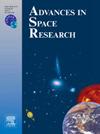利用哨兵-2 的多时指数和光谱波段,以随机森林和支持向量机加强土地利用和土地覆被分类
IF 2.8
3区 地球科学
Q2 ASTRONOMY & ASTROPHYSICS
引用次数: 0
摘要
多时成像具有捕捉季节变化的重要优势,这对于区分土地利用和土地覆被 (LULC) 类型至关重要。虽然这些类型在某一特定时间看起来相似,但它们在不同季节会表现出不同的物候模式。这种时间深度对于提高模型的准确性至关重要,尤其是在土地利用和土地覆被类型转换频繁而复杂的异质景观中。本文使用两种先进的机器学习模型,利用哨兵-2 号卫星 2020 年 4 月至 9 月的光谱波段和指数进行 LULC 分类:随机森林(RF)和支持向量机(SVM)。光谱指数包括归一化差异植被指数(NDVI)、归一化差异堆积指数(NDBI)和修正归一化水指数(MNDWI)。数据集分为四个时间特征集:四月至五月、六月至七月、八月至九月以及整个四月至九月。在每两个月期间,采用光谱波段和指数的中值。根据总体准确率、F1 分数、卡帕系数、精确度和召回率对两个模型进行了评估。结果表明,结合时间特征提高了所选模型的性能,RF 算法的总体准确率从 82.4% 提高到 94.03%,SVM 算法的准确率从 75.4% 提高到 93.54%。此外,RF 算法在不同时间段的准确率高于 SVM 模型,F1 分数、Kappa 统计量、精确度和召回率都有显著提高。这些改进凸显了模型利用哨兵-2 提供的丰富时间和光谱数据进行准确 LULC 分类的能力。这项研究强调了将时间动态纳入遥感应用以提高 LULC 分类的精确度和可靠性的重要性。本文章由计算机程序翻译,如有差异,请以英文原文为准。
Utilizing multitemporal indices and spectral bands of Sentinel-2 to enhance land use and land cover classification with random forest and support vector machine
Multitemporal imagery offers a critical advantage by capturing seasonal variations, which are essential for differentiating between land use and land cover (LULC) types. While these types may appear similar when examined at one specific time, they exhibit distinct phenological patterns across different seasons. This temporal depth is crucial for enhancing model accuracy, particularly in heterogeneous landscapes where LULC transitions are frequent and complex. This paper made use of spectral bands and indices of Sentinel-2 from April to September 2020 for LULC classification using two advanced machine learning models: Random forest (RF) and support vector machine (SVM). The spectral indices include the normalized difference vegetation index (NDVI), normalized difference built-up index (NDBI), and modified normalized water index (MNDWI). The dataset was divided into four temporal feature sets: April-May, June-July, August-September, and the entire period from April-September. For each two-month period, the median values of the spectral bands and indices were used. Both models were evaluated based on overall accuracy, F1-score, Kappa coefficient, precision, and recall. Results indicate that incorporating multitemporal features enhanced the performance of the chosen models, with overall accuracy increasing from 82.4% to 94.03% for RF and from 75.4% to 93.54% for SVM. Additionally, the RF algorithm demonstrated higher accuracy than the SVM model across various time periods, with notable improvements in other performance metrics. These improvements also underscore the ability of the models to leverage the rich multitemporal data provided by Sentinel-2 for accurate LULC classification. This study highlights the importance of incorporating the dynamics of features in remote sensing applications to enhance the precision and reliability of LULC classification.
求助全文
通过发布文献求助,成功后即可免费获取论文全文。
去求助
来源期刊

Advances in Space Research
地学天文-地球科学综合
CiteScore
5.20
自引率
11.50%
发文量
800
审稿时长
5.8 months
期刊介绍:
The COSPAR publication Advances in Space Research (ASR) is an open journal covering all areas of space research including: space studies of the Earth''s surface, meteorology, climate, the Earth-Moon system, planets and small bodies of the solar system, upper atmospheres, ionospheres and magnetospheres of the Earth and planets including reference atmospheres, space plasmas in the solar system, astrophysics from space, materials sciences in space, fundamental physics in space, space debris, space weather, Earth observations of space phenomena, etc.
NB: Please note that manuscripts related to life sciences as related to space are no more accepted for submission to Advances in Space Research. Such manuscripts should now be submitted to the new COSPAR Journal Life Sciences in Space Research (LSSR).
All submissions are reviewed by two scientists in the field. COSPAR is an interdisciplinary scientific organization concerned with the progress of space research on an international scale. Operating under the rules of ICSU, COSPAR ignores political considerations and considers all questions solely from the scientific viewpoint.
 求助内容:
求助内容: 应助结果提醒方式:
应助结果提醒方式:


